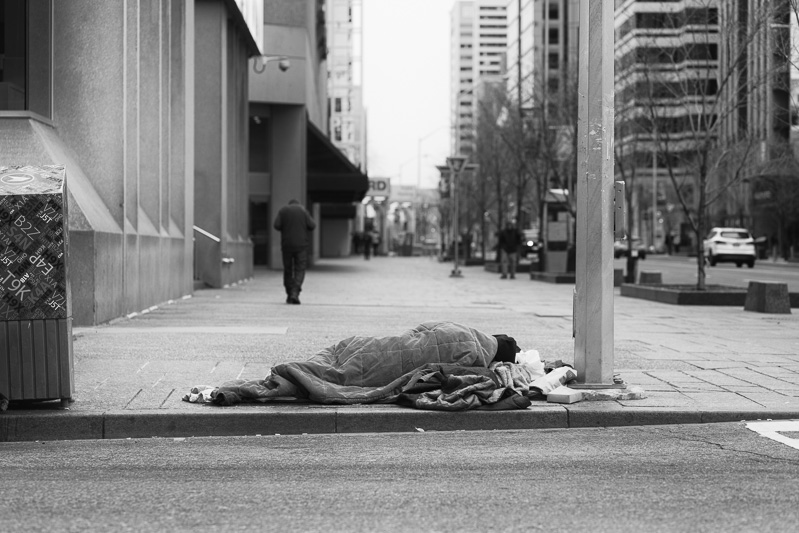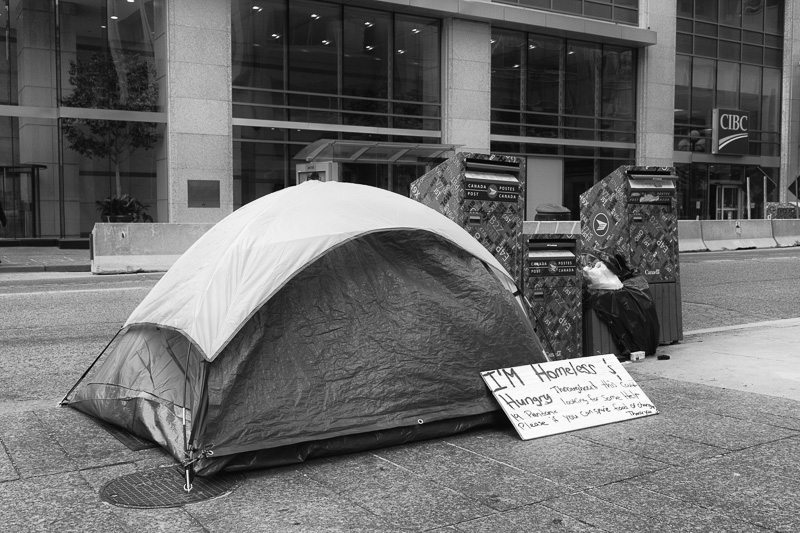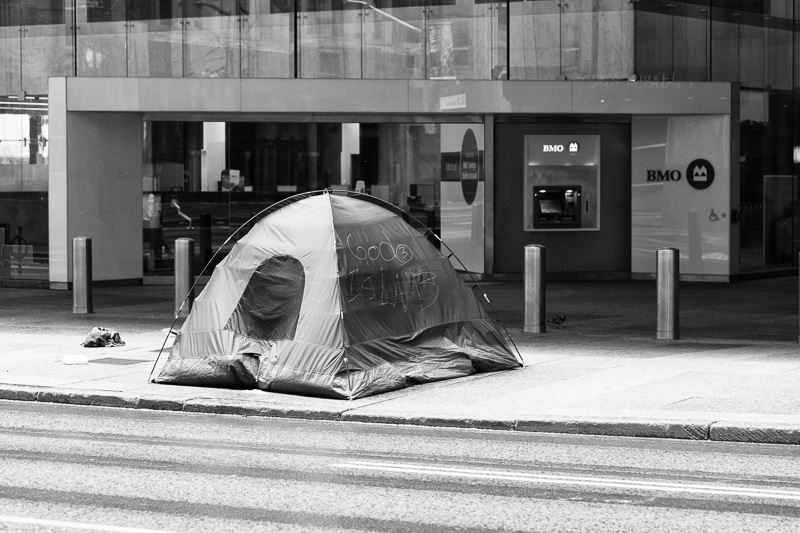For those of us in Toronto who can afford to self-isolate, that period of self-imposed hermeticism began on or about Saint Patrick’s Day. Photographers posted images of empty city streets but I saw none of that emptiness first-hand. I was busy doing my best to do nothing. My wife falls within one of the most vulnerable categories of potential Covid-19 patients and so I have strictly policed our contact with the world beyond our four walls. Because of this, I have gone on no dedicated photo walks since early March. The only time I have taken a camera with me is when I have been doing something else, like a grocery run or a supply run to my wife’s office so she can keep working from home.
Each time I go out, I ask myself: where are all those empty streets? It turns out the photographs I’ve seen misrepresent the situation. Yes, traffic has abated a little. And yes, there have been fewer pedestrians on the sidewalks. But the streets have been far from empty. Even in the early days there were a lot of people in the streets, and then it seemed that a far higher proportion of them were homeless. More hands extended begging for change; less coin to go around. This was the more striking given that only a few weeks earlier the city had done a sweep of Rosedale Valley Road, cleaning things up, or getting the poor the help they need, or whatever tepid phrase you care to apply to the exercise.
Although I am no expert in such matters (who among us is—except maybe the homeless?), I would hazard to guess that Covid-19 has accelerated the pace at which practical considerations have revealed how useless the city’s efforts have been. The few conversations I’ve had harp on a common theme: they want us to social distance? how the fuck are we supposed to do that in a shelter? The result has been more tents. The city’s response is predictable. They removed the tents from George Hislop Park. I expect other locales have followed. Typically, in the summertime, tents proliferate in the ravines and under bridges. Now that the city has started policing social distancing, will that become an indirect way to police homelessness? We’re concerned that too many people are congregating in public parks; let’s round them up and stuff them into shelters.

I don’t see much curiosity around the way medical guidance from infectious disease experts intersects with and is folded into class norms. I think this would be a fruitful line of inquiry. Again, I am no expert in such matters (who among us is—except maybe people with cross-discipline training in both epidemiology and anthropology?), but I would hazard to guess that public health pronouncements like self-isolate or keep two metres apart or wear a mask reach us through a gossamer filter of class assumptions.
I confess that I accept these pronouncements. I start with the view that they describe prudent actions. It is a short leap from there to the view that they describe socially responsible actions. And another short leap to a self-righteous attitude that is only too willing to shame those who crowd into a park or fail to wear a mask properly or forget to wash their hands. It’s easy to overlook the possibility that medical guidance is entrenched within or is an expression of middle-class values. But those things we expect of people—self-isolation, social distancing, masks, hand-washing—are not possible for many people.
While self-isolation is a prudent thing to do, one of the problems with self-isolation is that it reinforces our already problematic habit of seeing the world only through our own eyes. One of the things I miss from the world before Covid-19 is the opportunity to meet strangers in the street and to listen to their stories and, for a brief moment, to see the world through their eyes. That is the only way I know how to keep myself mindful of the contingent place I occupy in this world.

